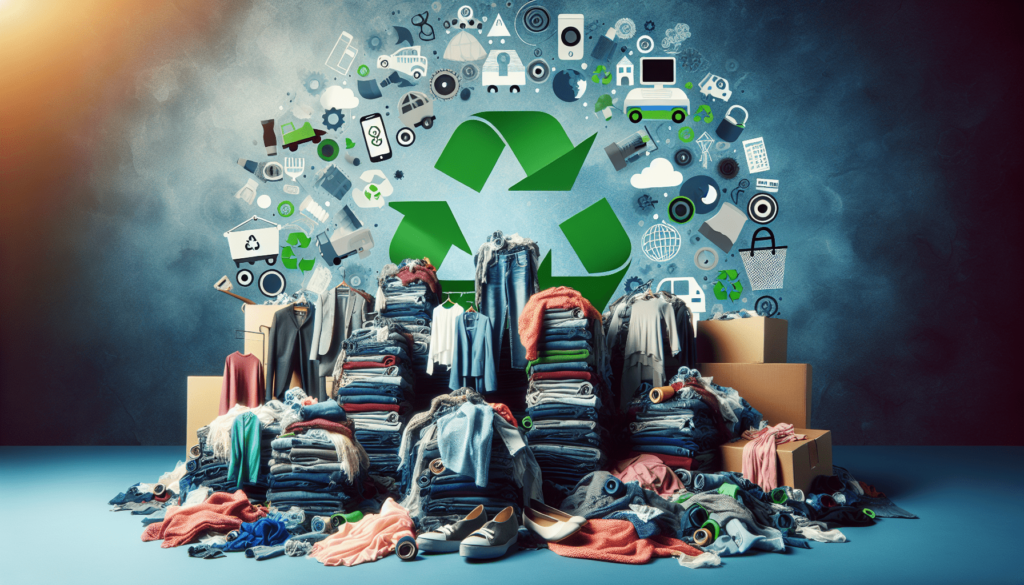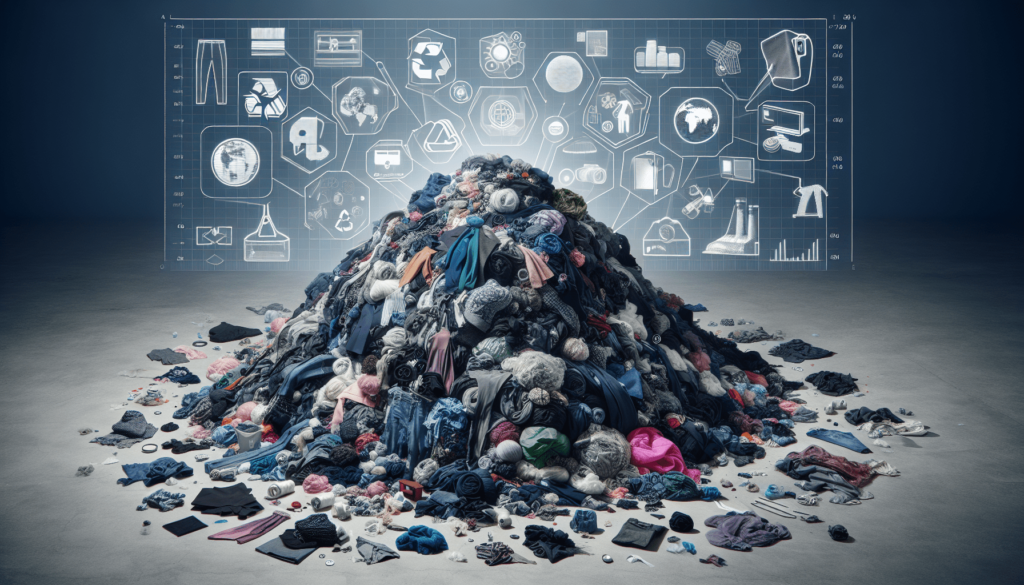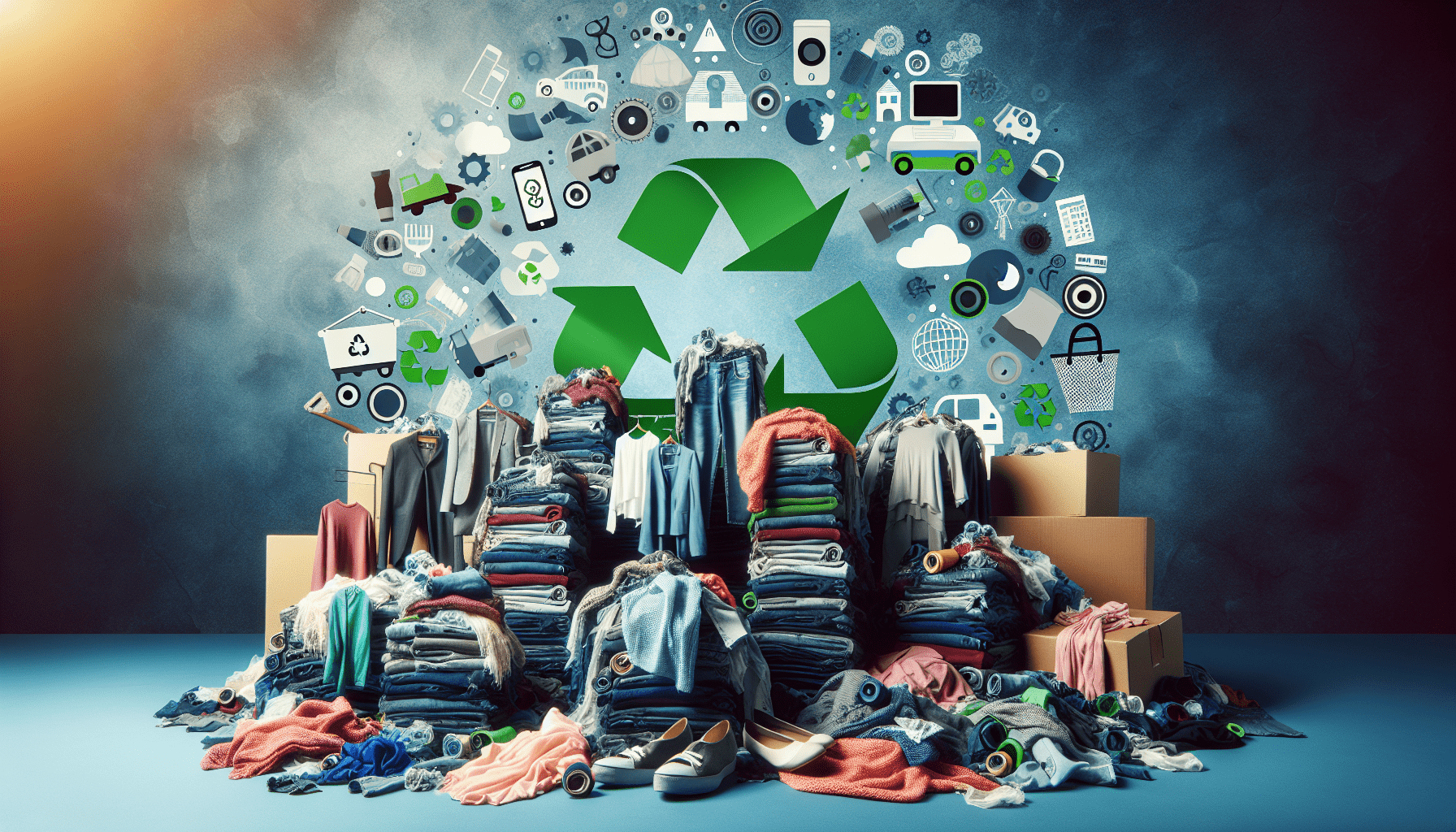Welcome to the fascinating world of textile recycling! In this article, you will learn about the tremendous positive impact that textile recycling has on the environment. By recycling textiles, you are not only helping to reduce waste in landfills, but also saving energy, water, and resources. So next time you think about throwing away old clothes or linens, consider donating or recycling them instead to help protect our planet!
Have you ever wondered about the environmental impact of textile recycling?
If you’ve ever felt guilty about throwing away old clothes or items made of fabric, you might be interested in learning more about the environmental impact of textile recycling. Textile recycling is a crucial aspect of sustainable living and can greatly reduce the amount of waste that ends up in landfills. In this article, we’ll explore the environmental benefits of textile recycling and how you can make a difference by participating in this eco-friendly practice.

What is Textile Recycling?
Textile recycling is the process of reusing or reprocessing old, unwanted textiles into new products. This can include clothing, household textiles like curtains and bed linens, and even industrial textiles such as tarps and tents. Instead of throwing these items away, they are collected, sorted, and processed to be turned into new materials. By recycling textiles, we can reduce the demand for new materials, conserve natural resources, and minimize the environmental impact of the textile industry.
The Environmental Benefits of Textile Recycling
When you recycle textiles, you’re not only preventing them from ending up in a landfill, but you’re also reducing the need to produce new textiles from virgin materials. This has a number of positive environmental benefits:
-
Conserving Resources: Textile production requires a significant amount of water, energy, and raw materials. By recycling textiles, we can reduce the demand for these resources and minimize the environmental impact of textile manufacturing.
-
Reducing Landfill Waste: Textiles can take hundreds of years to decompose in a landfill, taking up valuable space and releasing harmful greenhouse gases in the process. By recycling textiles, we can divert them from landfills and reduce the amount of waste that accumulates in these sites.
-
Lowering Carbon Emissions: The production of textiles generates carbon emissions through processes like dyeing, printing, and transportation. By recycling textiles, we can reduce the need for new production and lower the carbon footprint of the textile industry.
In addition to these environmental benefits, textile recycling can also create new job opportunities in the recycling and manufacturing sectors, contributing to a more sustainable economy.
How Textile Recycling Works
The process of textile recycling involves several steps, from collection to processing to creating new products. Here’s a brief overview of how textile recycling works:
-
Collection: Textiles are collected from various sources, including donation centers, clothing banks, and recycling facilities. Some organizations also offer textile recycling bins in community centers or public spaces.
-
Sorting: Once collected, textiles are sorted by material type, color, and condition. This helps ensure that they can be effectively recycled and turned into new products.
-
Processing: Textiles are then cleaned and processed to remove any impurities like buttons, zippers, or labels. The materials are shredded or broken down into fibers, which can be used to create new textiles or other products.
-
Manufacturing: The recycled fibers are then used to create new textiles, clothing, or other products. These products can be sold on the market or donated to communities in need.
By following these steps, textile recycling can effectively reduce waste, conserve resources, and promote sustainability in the textile industry.
The Impact of Fast Fashion
The rise of fast fashion has had a detrimental impact on the environment, leading to increased production, consumption, and disposal of textiles. Fast fashion brands often prioritize low-cost, disposable clothing, which results in a higher turnover of garments and a larger amount of textile waste. This has significant environmental consequences, including:
-
Resource Depletion: Fast fashion relies on the rapid production of textiles, which consumes a large amount of water, energy, and raw materials. This can lead to resource depletion and environmental degradation in regions where textiles are manufactured.
-
Pollution: The production of textiles releases harmful chemicals and pollutants into the environment, impacting air, water, and soil quality. Dyeing, printing, and finishing processes can contaminate water sources and contribute to environmental pollution.
-
Waste Generation: Fast fashion contributes to a “throwaway culture” where garments are quickly discarded and end up in landfills. The high turnover of clothing leads to an increase in textile waste and environmental impact.
By supporting textile recycling and choosing sustainable fashion options, you can help mitigate the negative effects of fast fashion and promote a more environmentally conscious approach to clothing consumption.

How You Can Make a Difference
As an individual, you have the power to make a difference in the environmental impact of textile recycling. Here are a few ways you can contribute to a more sustainable textile industry:
-
Donate Your Old Clothes: Instead of throwing away unwanted clothes, consider donating them to charity organizations or clothing banks. This allows your textiles to be reused or recycled, reducing waste and supporting those in need.
-
Shop Sustainable Brands: Look for clothing brands that prioritize sustainability and ethical practices. Choose garments made from organic, recycled, or eco-friendly materials, and support companies that promote fair labor practices and environmental stewardship.
-
Educate Yourself: Learn more about the environmental impact of textile recycling and the importance of sustainable fashion. Stay informed about industry practices, trends, and initiatives that support a more circular economy.
By taking these small steps, you can help reduce waste, promote sustainability, and make a positive impact on the environment.
The Future of Textile Recycling
As the demand for sustainable solutions grows, the future of textile recycling looks promising. Innovations in recycling technologies, materials science, and circular economy principles are driving the development of new processes and products in the textile industry. From upcycled fabrics to biodegradable materials, the possibilities for textile recycling are expanding.
By investing in research, education, and infrastructure for textile recycling, we can create a more sustainable and circular economy for the future. This includes supporting initiatives that promote recycling, reduce waste, and encourage collaboration across industries to create a more environmentally friendly textile industry.
As consumers, we have the power to drive change and influence industry practices by making informed choices and supporting brands that prioritize sustainability. By participating in textile recycling and advocating for a more sustainable fashion industry, we can make a difference in the environmental impact of textiles and create a more sustainable future for all.
So the next time you clean out your closet or shop for new clothes, remember the importance of textile recycling and the positive impact it can have on the environment. By choosing to recycle, reuse, and reduce waste, you’re not only helping the planet but also contributing to a more sustainable and ethical textile industry.

